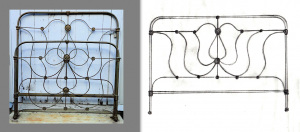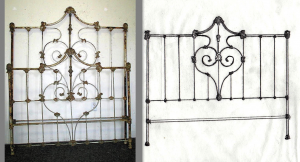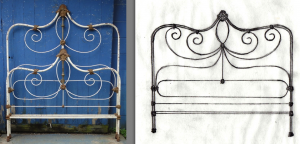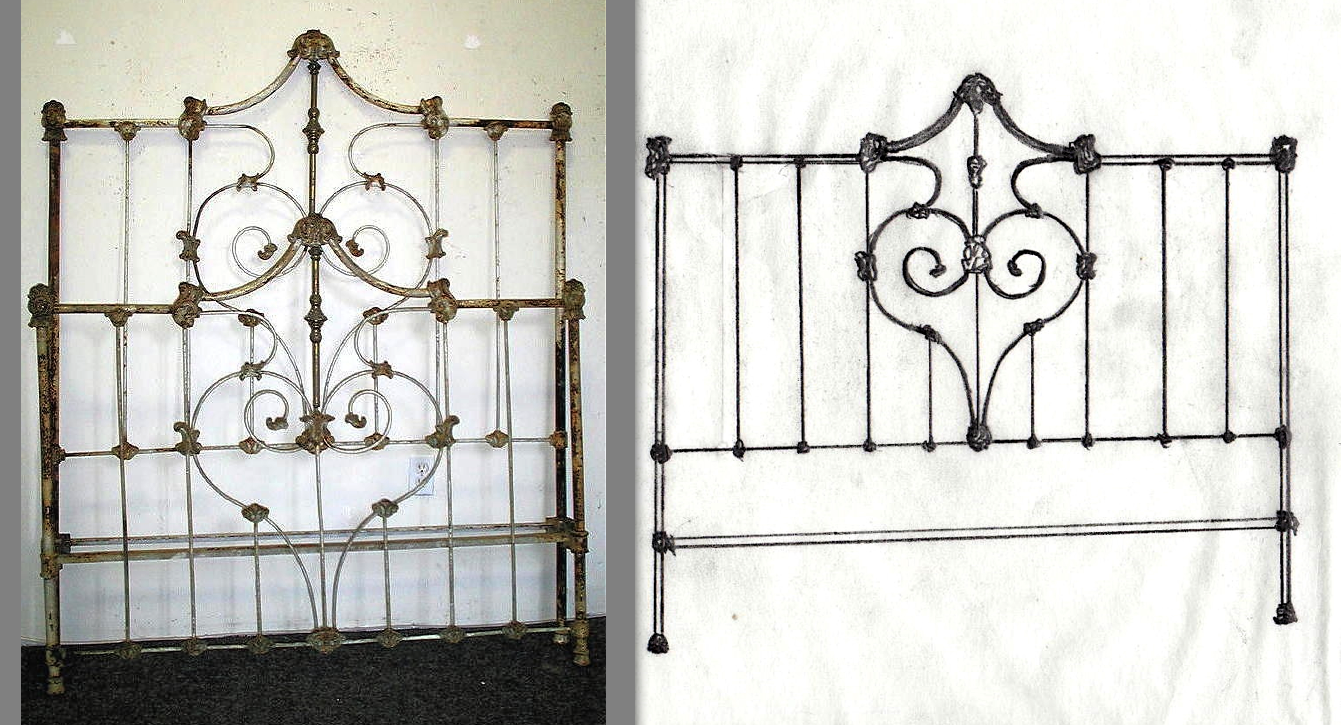As you may already know, the largest size iron beds being made back in the early 1800’s was a double size . So when someone wants a king size , we convert whatever original double size bed they select from our inventory into a king size. That’s done by cutting the bed apart in integral places and adding additional tubing to increase the width of the headboard and footboard. We also take molds of the original castings so when additional vertical rods are needed, we’re then able to pour those needed castings in our foundry. When we convert a bed to king size, it’s been done in the same manner in which the beds were originally put together close to 200 years ago. 


When it comes to Queen conversions, although it can be done in the same manner as a king conversion, none of the above is really necessary. The reason being, the difference in width between the antique double bed and the modern queen is negligible…. It’s only a couple of inches on both sides. So a width conversion isn’t necessary like that with a king. The way we accommodate the old double bed, to hold the queen mattress, is by welding the original angle iron side rails, that hold the headboard and footboard together lengthwise, longer by 5″. Once put together the box spring and mattress will set on top of the siderails and extend over a couple of inches. Once your bed is appropriately dressed, that width difference is not noticeable.
With regard to Canopy Conversions….We do three basic conversions: Straight canopy with horizontal canopy poles connecting the four posts. We also do a “Crown Canopy conversion that incorporates the straight canopy and has curves poles that start at the four corners and curve up to a central hoop that is approximately 15” higher in the middle. On both canopy’s, we pour castings in our foundry so the existing side pole, coming from the ground, look like one long continuous pole. The third canopy we do is called the “Princess Canopy”. It is much like the “Crown Canopy”, except the curved side rods that meet at a “hoop” on the Crown Canopy, meet at a central casting, forming a peak.
It should be mentioned that all of our conversions are done in the same manner foundries constructed their beds back in the early 1800’s. For this reason, our conversions never look like conversions…..
Before any of our conversions can take place, we first have to do a proportional sketch of how we want it to look after the conversion is done. Because the are always numerous ways and designs a bed can take on after a conversion. We want our customers to know exactly what the double size they bought is going to look like after it’s been converted to king size. The “king size sketch” also cuts down on any confusion or mistakes with our welder and foundry people. Having a rough “blueprint” to go by takes the guess work out of the loop all together.
I’ve enclosed two individual sketches to show you how some beds have an obvious manner in which they should be converted. Where others can have multiple ways in which a king conversion can be done and still look appropriate.
In designing the king conversion it’s extremely important to try and maintain the original symmetry of the design. If a person falls in love with a bed in it’s double size……. the last thing we want to do is alter the design they fell in love with. Some times that’s difficult and in those instances…….. the king sketch and eliminate any surprises. If the bed takes on a whole new appearance, it may not be to the liking of our customer. The king conversion sketch eliminates that possibility.
Few iron beds I’ve had, don’t look better as a king size. Except possibly for those beds in which the tubing going across the top is very thin, or what we call “pencil rod”…….. the same circumference as a standard pencil. Beds of this style don’t really have the gauge of tubing needed to weld additional tubing in to without exacerbating the amount of flex it already has in the headboard.
So “rule of thumb”, when selecting a bed you’re going to want converted to king size…….choose one with at least 1″ tubing going across the top…….. not “pencil rod”.
I hope you’ve found this blog informative . I invite you to revisit my website
to answer any and all questions you might have about antique iron beds.
I also invite you to take a look at our company Face Book page for multiple photo albums on Custom Finishes, Canopy Conversions and a comprehensive “Before & After” King Conversions album.







